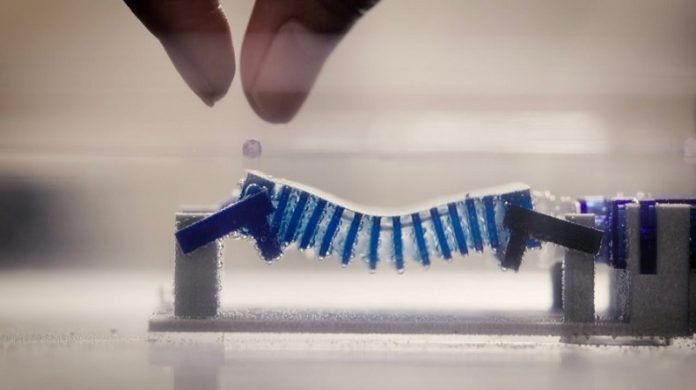
In a breakthrough that could help protect our oceans, a team of scientists at Cornell University, led by Professor Sunghwan “Sunny” Jung, has created a robot prototype inspired by a snail.
This small, slow-moving creature might seem like an unlikely hero, but its unique way of moving and eating has inspired a potential solution for a huge environmental problem: microplastics in our waters.
Microplastics are tiny bits of plastic, so small they can be hard to see. They’re a big problem for our oceans, lakes, and seas.
These plastics don’t just float around; they can get eaten by marine animals, which can make them sick and even affect the food we eat.
Right now, about 8 to 10 million metric tons of plastic end up in our oceans every year.
That’s a lot! Most of this is bigger pieces of plastic, but it’s the tiny microplastics that are really tricky to clean up.
The robot, inspired by the Hawaiian apple snail, could change that. This snail has a special way of moving and eating.
It uses its foot to create waves in the water, pulling in food particles. The scientists at Cornell thought, “Why not use this idea to scoop up microplastics?”
Their robot is still just a prototype. It’s small and runs on only 5 volts of electricity, but it’s effective.
It’s made with a 3D printer and has a flexible, carpet-like sheet that undulates, or moves in waves, on the water surface. Underneath, there’s a helical structure, kind of like a corkscrew, which helps create these waves.
Understanding how the fluid, or water, moves was a key part of making this robot. The team found that copying the snail’s open system, where the pumping action is exposed to the air, is more efficient than a closed system.
A closed system, like a tube sucking in water, would need a lot of energy to work. But the snail-like design of the robot doesn’t need much power at all.
One challenge the researchers face is the weight of the battery and motor. To solve this, they’re thinking about adding a flotation device to keep the robot from sinking.
This research, detailed in a study called “Optimal free-surface pumping by an undulating carpet,” could be a big step forward in cleaning up our waters. It’s a great example of how looking to nature can help us solve some of our biggest environmental problems.
Anupam Pandey, who used to work in Jung’s lab and is now a professor at Syracuse University, played a major role in this project. Their work shows that even the smallest creatures can inspire big ideas for keeping our planet healthy.



